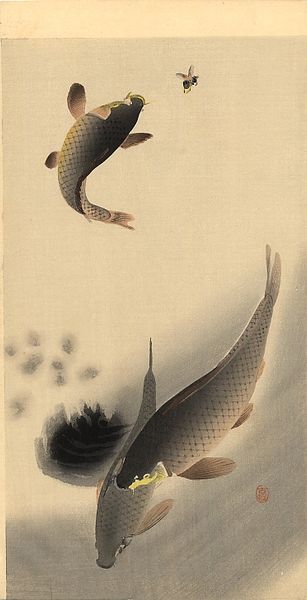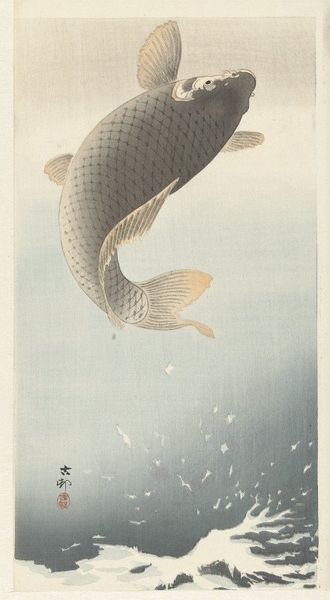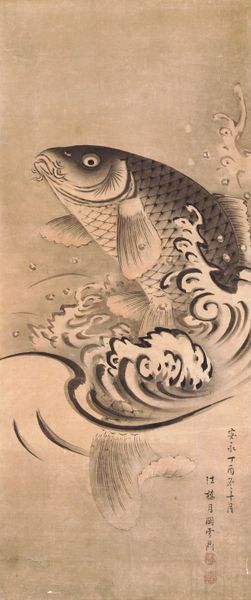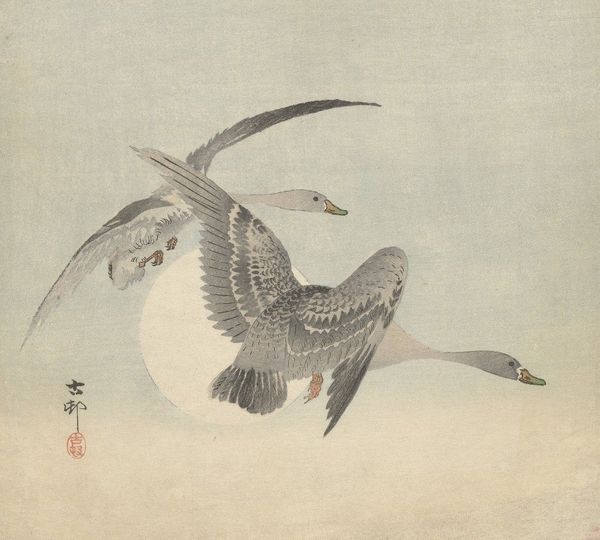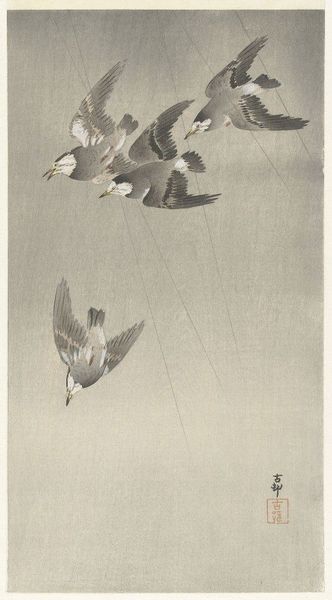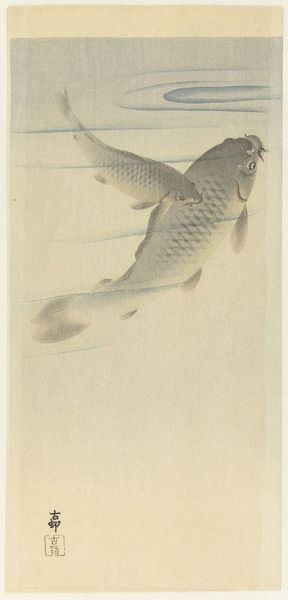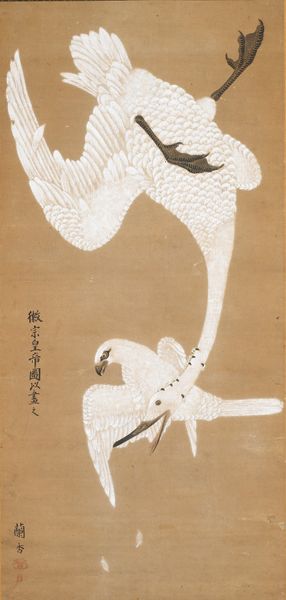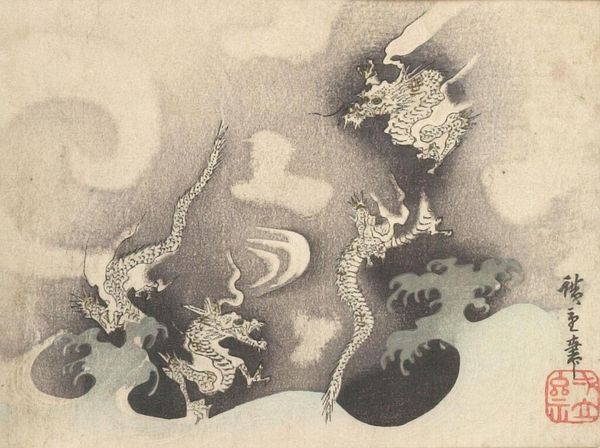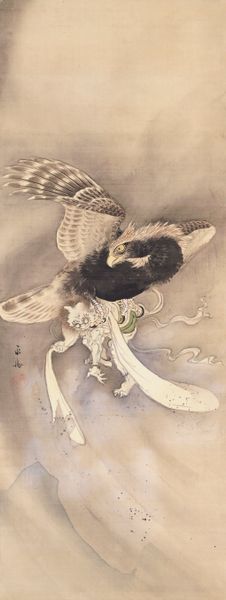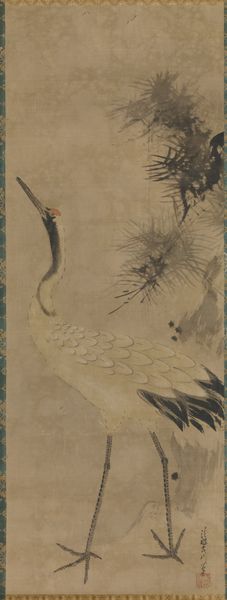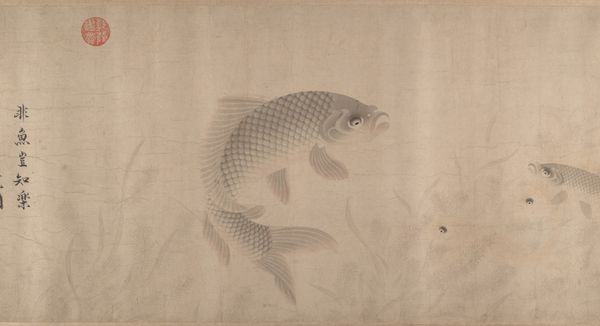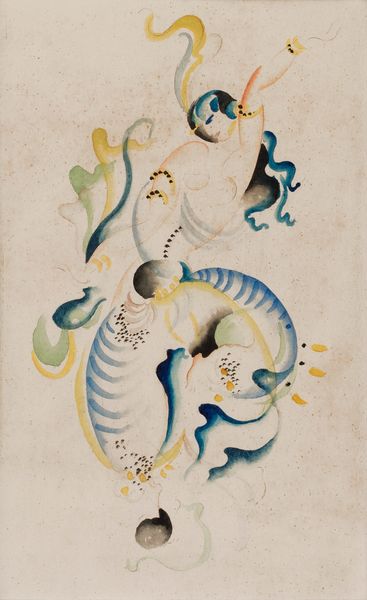
Dimensions: height 90.9 cm, width 50.7 cm, diameter 5 cm, length 64 cm
Copyright: Rijks Museum: Open Domain
Curator: This is "Karpers," a woodblock print and watercolour illustration created sometime between 1887 and 1945, by the Japanese artist Ohara Koson. It’s currently held at the Rijksmuseum. Editor: Immediately striking. The colour palette is quite limited and almost monochromatic, lending the work a peaceful, almost ethereal quality. The verticality of the composition, how the carp are stacked creates a certain upward thrust. Curator: Ukiyo-e prints like these emerged from a specific cultural context. Consider how these images, initially accessible to a wider public, circulated and how that democratisation of art impacted societal values and perceptions. In feudal Japan, images of Carp are often associated with strength and perseverance because of their ability to swim upstream. Editor: Precisely! Observe how Koson utilizes the negative space to define form and movement. The splash is almost calligraphic. Consider the woodblock technique—how each line is both deliberate and economical, a perfect example of expressing maximum effect with minimal means. The translucence in the carp themselves gives an ethereal effect. Curator: Yes, and one can explore gender roles here too. Are images of strong, virile creatures inherently gendered, particularly within the patriarchal structures of feudal Japan? How might that interpretation challenge contemporary ideas around representation? The fish push towards something greater; it could represent the Japanese identity pushing towards change during the tumultuous Meiji era. Editor: Interesting… and technically the artist uses a layering effect of colours to convey the textures of the scales as they play with the light. It gives a very sophisticated spatial illusion, almost a sense of depth and volume, which is then subtly subverted by the flat background plane of the paper. Curator: It really speaks to ideas of national identity in pre and post war Japan and how national pride and strength were expressed. The circulation of these artworks during this period could be a marker of emerging capitalist marketing strategies, a fascinating tension between artistic expression and socio-economic imperatives. Editor: Well, regardless of interpretation, "Karpers" embodies masterful execution and formal arrangement. The rhythm created is so harmonious and compelling. Curator: Absolutely. This piece highlights the intersections between artistic creation, societal values, and political movements, inviting a continuous reassessment of how art shapes—and is shaped by—our world. Editor: And, of course, it invites viewers to reflect upon the power of visual language, of brushstrokes and colour, to evoke emotion and contemplation.
Comments
No comments
Be the first to comment and join the conversation on the ultimate creative platform.
